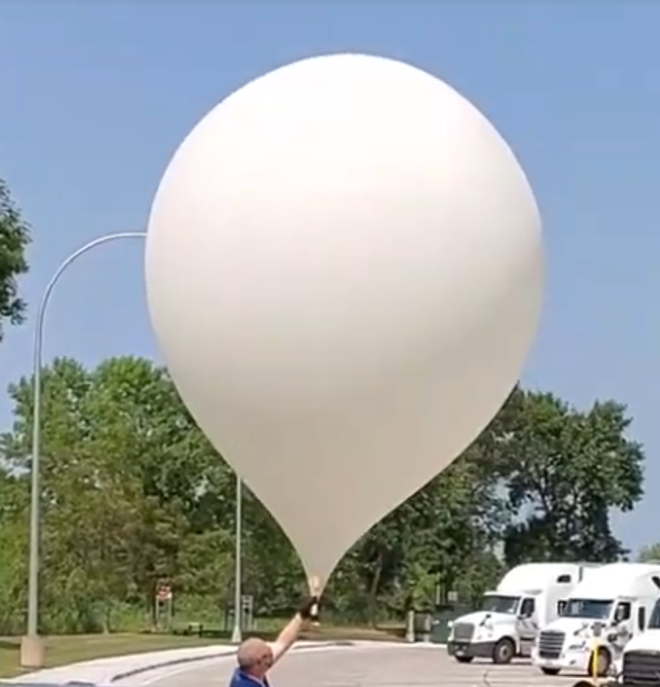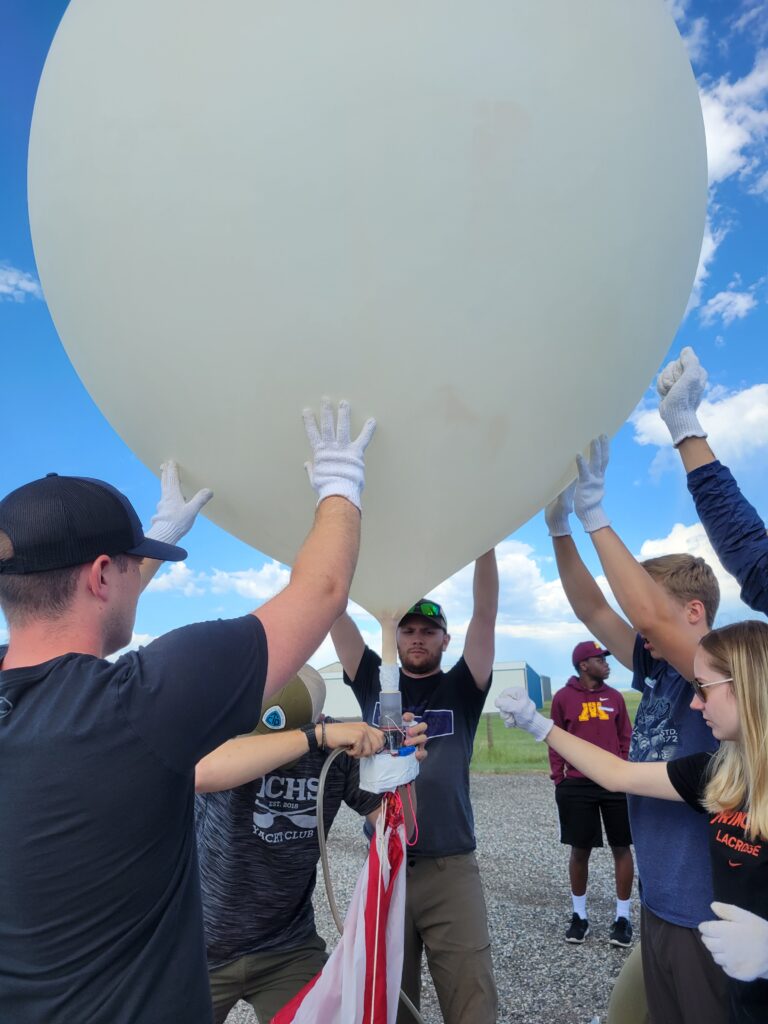NASA has selected the University of Minnesota Twin Cities to be a pod lead for the Nationwide Eclipse Ballooning Project (NEBP).
As a pod lead, the UMN-TC ballooning team will be central to training teams from other states to engineer the video streaming side of the project.
Three other schools in Minnesota were also selected to conduct atmospheric experiments during the upcoming eclipses: St. Catherine University, St. Cloud State University, and Fond du Lac Tribal and Community College.
Teams of high school and college students from across the country are preparing small experiments to accomplish big science during two upcoming eclipses.
Atmospheric and Engineering Projects
NEBP payloads focus on either atmospheric science or engineering.
Teams with atmospheric science projects will fly small weather sensors as high as 115,000 feet each hour for 30 hours along the eclipse path.
For engineering projects, each team will launch one balloon during each eclipse, floating its 12-pound payload, which includes live streaming cameras, at about 70,000 feet.
In total, 26 teams from 15 states were selected for atmospheric experiments, and 56 teams from 28 states were selected for engineering projects.
Through the NEBP, students will gain real-world STEM experience and contribute valuable scientific and engineering data through their projects, which will be carried by weather balloons into the upper reaches of Earth’s atmosphere.
Solar Eclipses in 2023 and 2024
Portions of North America will experience an annular solar eclipse on Oct. 14, 2023, and a total solar eclipse on April 8, 2024. During an annular solar eclipse, the Moon is at or near its farthest point from Earth, so it appears smaller and does not fully block the Sun, as it does in a total solar eclipse.
When these celestial events occur, participating student teams will be in place along the eclipse path to fly their payloads exploring phenomena such as changes in temperatures and gravity waves or testing new technologies.
“The Nationwide Eclipse Ballooning Project is an important educational experience for participants,” said Angela DesJardins, director of the Montana Space Grant Consortium. “But it’s also designed to gather important, solid science.”
Since its inception in 2014, NEBP has supported studies during eclipses in 2017, 2019, and 2020. Led by the Montana Space Grant Consortium, the project is primarily funded through the Science Activation (SciAct) program within NASA’s Science Mission Directorate (SMD) with contributions from the National Space Grant College and Fellowship Project (NASA Space Grant) and support from NASA’s Balloon Program Office, based out of the agency’s Wallops Flight Facility.
NASA’s SMD focuses on advancing our understanding in the areas of Earth science, planetary science, heliophysics, and biological and physical sciences. Through SciAct, SMD provides authentic opportunities for students to engage in these topics and more. NASA Space Grant comprises a national network of higher education institutions and partners. Space Grant’s 52 consortia include one in each U.S. state, the District of Columbia, and the Commonwealth of Puerto Rico.
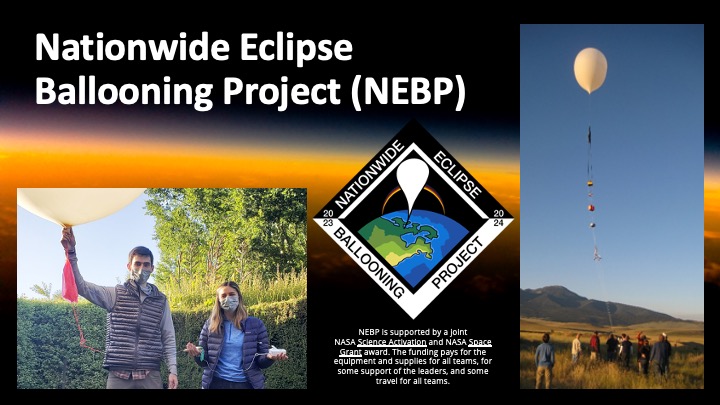
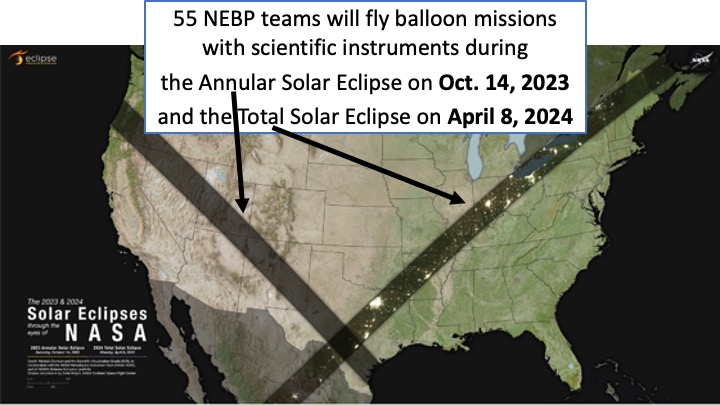
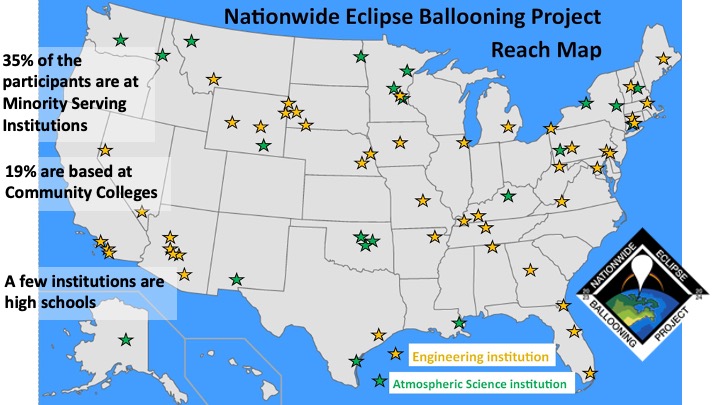
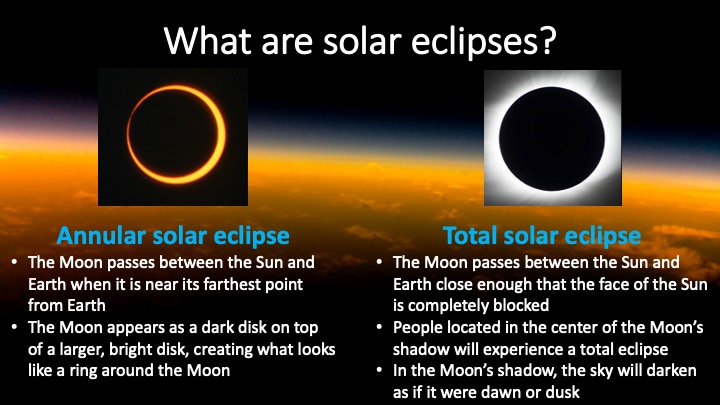
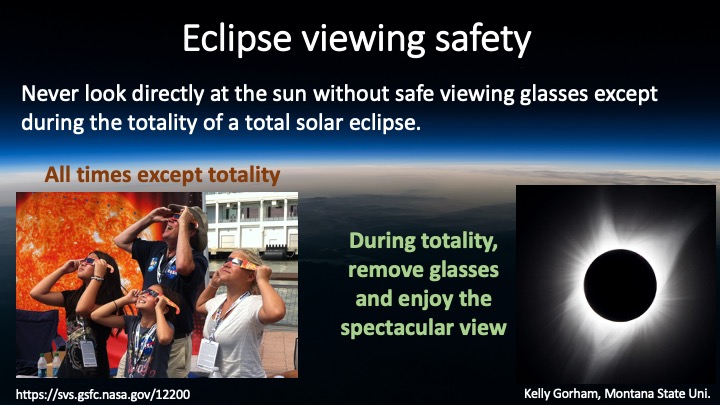
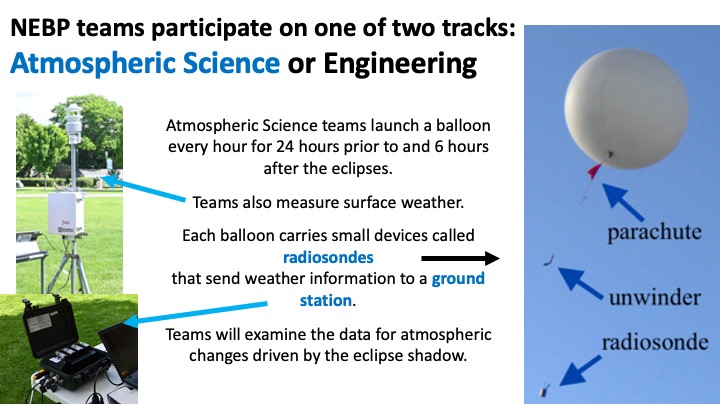
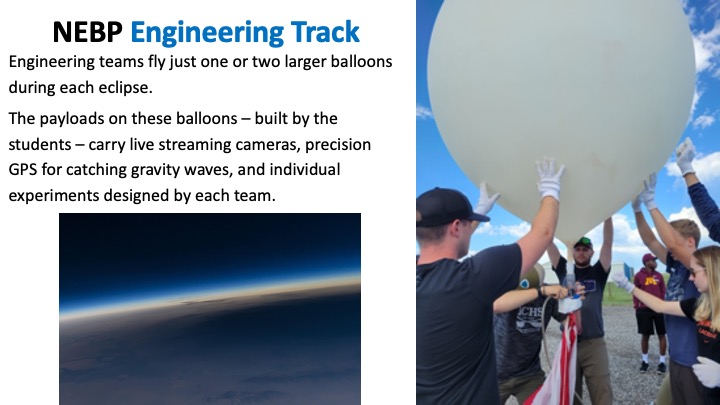
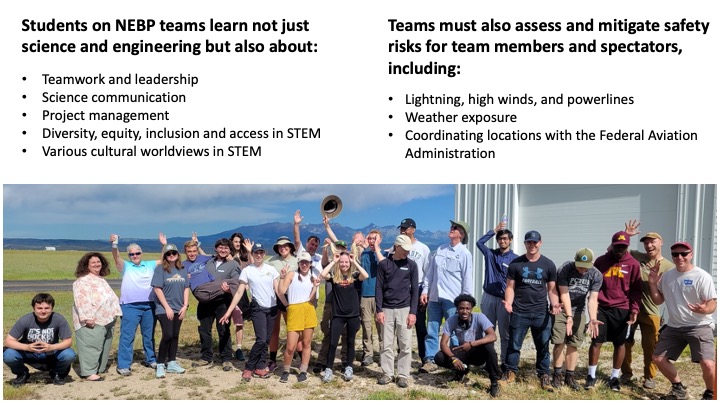
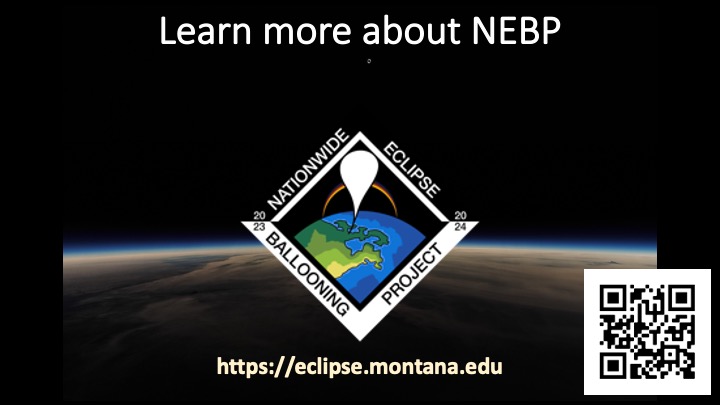
•
Press Release – NASA Eclipse Balloon Project
